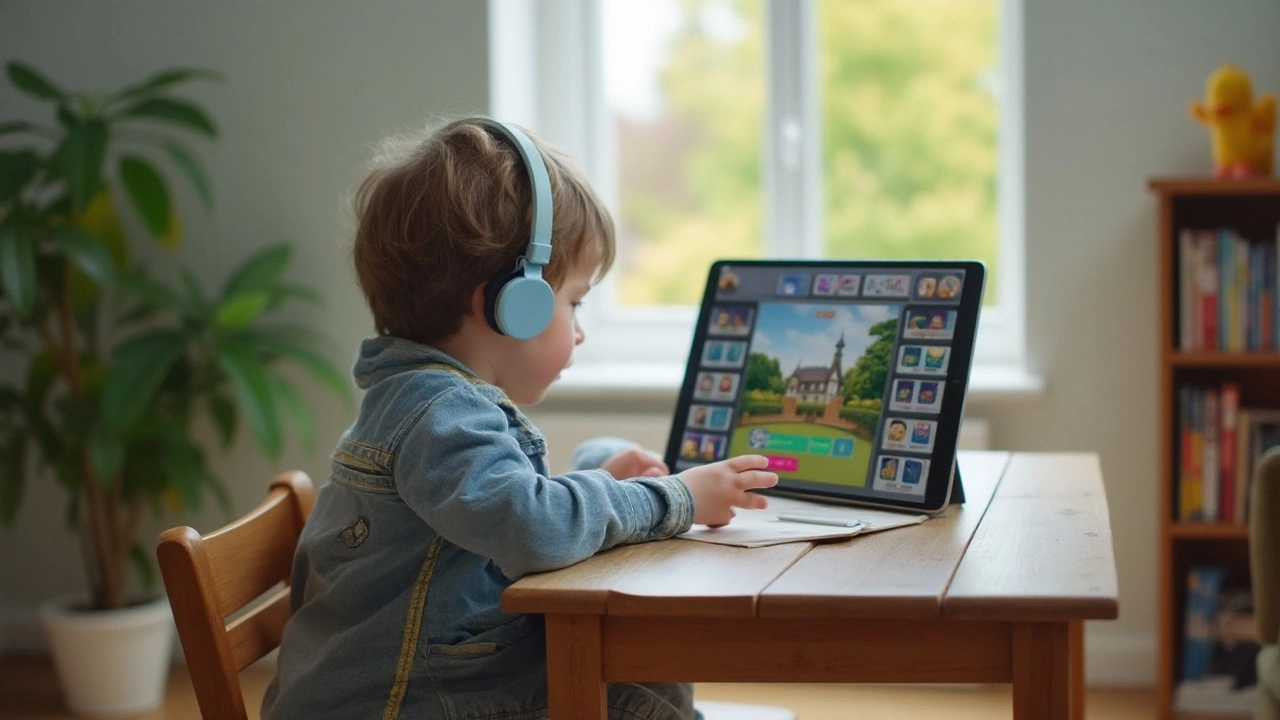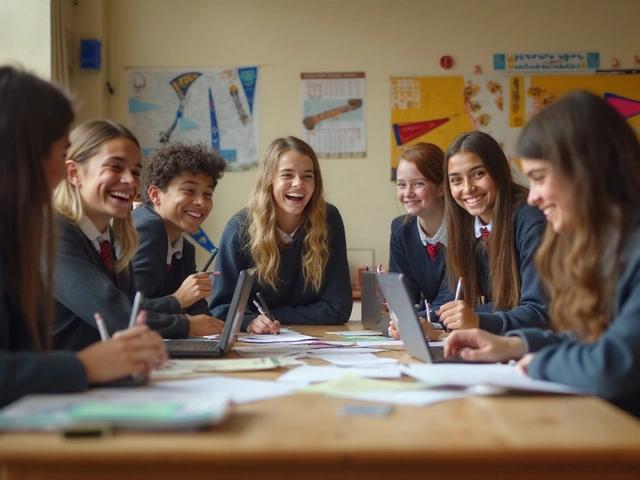When it comes to alternatives to traditional schooling, remote learning and homeschooling emerge as popular options. Yet, they are not the same thing. While both offer flexibility and convenience, their methods and structures differ significantly.
Remote learning typically refers to an educational process that takes place online. Schools provide the resources and curriculum, and teachers deliver classes through digital means. This has become more common with the advancement of technology and the recent global events that necessitated social distancing.
Homeschooling, on the other hand, involves a more hands-on approach by the parents. They take charge, tailoring the curriculum to suit their child's needs and learning pace. It requires a commitment to educate the child outside the realm of formal schooling institutions.
Understanding these differences is crucial for parents exploring educational options for their children in today's fast-evolving learning landscape. Each has its unique set of benefits and challenges that need careful consideration.
- Defining Remote Learning
- Understanding Homeschooling
- Key Differences Between Remote Learning and Homeschooling
- Advantages and Challenges of Each Approach
Defining Remote Learning
In recent years, remote learning has emerged as a groundbreaking method of education, adapting seamlessly to the digital-first world we find ourselves in today. It's a versatile approach, combining technology and pedagogy in a manner that revolutionizes traditional classroom settings. At its essence, remote learning is a mode of delivering education and instruction from a distance, predominantly using the internet to connect students and teachers from various locations. Many educational institutions, ranging from elementary schools to higher education, have adopted this model to cater to a diverse student demographic, transcending geographical constraints.
One might wonder how remote learning differentiates itself from mere online education. Though the terms are often used interchangeably, online education is more broadly any learning experience that utilizes digital platforms. Remote learning specifically involves a synchronized or asynchronous instructional process led by educators. Prior to the 2020 pandemic, the digital landscape was already witnessing innovations in remote education tools. Then, the unprecedented closure of schools worldwide accelerated its adoption, creating a paradigm shift in how we perceive education. According to a report by the World Economic Forum, close to 1.2 billion children in 186 countries were affected by school closures, pushing an urgent shift towards digital solutions.
The structure of remote learning is typically composed of virtual classrooms, where teachers and students interact via video conferencing tools like Zoom or Google Meet. These platforms offer a suite of functionalities to replicate in-person experiences, from breakout rooms for group discussions to digital whiteboards for collaborative work. In these settings, the lesson plans are designed to be more interactive, with multimedia presentations and online resources supplementing traditional methods of teaching.
"Digital learning is a fundamental shift in pedagogy, moving from a teacher-centric model to a more student-led approach," says John Baker, founder of the educational technology company D2L.
Aside from live interactions, remote learning often incorporates an asynchronous component. Here, students engage with pre-recorded lectures, participate in online forums, and work on assignments at their convenience, allowing them to control their learning pace. This flexibility can significantly benefit students who thrive in non-traditional learning environments or those who balance education with other commitments, such as part-time jobs or caregiving responsibilities. Looking deeper, education policy experts continue to advocate for remote learning as a valuable tool in making learning more accessible and inclusive, especially for students in rural or underserved areas.
Challenges, however, persist. The digital divide remains a significant hurdle, with unequal access to technology and high-speed internet affecting students' ability to participate effectively. To address these issues, many educational entities have initiated programs providing necessary gadgets and connectivity solutions to students. Nevertheless, the broad acceptance and implementation of remote learning stand testament to its potential. A joint study by McKinsey & Company and the International Society for Technology in Education found that 70% of teachers believe technology can effectively bridge gaps in education, equipping students with skills for the digital age.

Understanding Homeschooling
Homeschooling is an educational approach where parents take the primary responsibility for educating their children outside of traditional school settings. This method allows for immense flexibility and customization, tailoring the learning experience to the child's individual needs, interests, and pace. It is widely recognized in many parts of the world, supported by networks and resources that help guide families through the curriculum and educational materials. Homeschooling is particularly popular among families who want to incorporate specific values or religious teachings into their daily learning activities. According to the National Center for Education Statistics, as of 2023, approximately 3.7 million students were being homeschooled in the United States alone.
The beauty of homeschooling lies in its adaptability. Parents can choose various educational styles, including but not limited to the classical method, the Montessori approach, or a more eclectic system drawing elements from different theories. This choice allows parents to shape a personalized education path that aligns best with their child’s unique learning style. Online classes, curricula from established homeschooling organizations, and community resources provide myriad learning materials. Such options ensure a full, well-rounded education that covers necessary academic subjects and fosters broader skill development.
Parental involvement is significant in homeschooling, requiring a commitment to both teaching and learning. It demands time, effort, and often financial resources to procure relevant educational materials. Parents often become facilitators, leading the learning journey while also learning alongside their children. This collaborative approach can strengthen family bonds, as learning becomes a shared experience. As a parent new to distance education noted, "Homeschooling has given us the chance to explore subjects deeply, beyond the borders of a fixed syllabus. It's an education for both my child and me."
Albert Einstein once said, "Education is what remains after one has forgotten what one has learned in school." This sentiment resonates deeply with the homeschooling philosophy, emphasizing the development of critical thinking and lifelong learning skills.
The homeschooling community is vast and diverse, encompassing both secular and religious families, and it often includes supportive networks and co-ops. These community structures allow like-minded families to connect, share resources, and even collaborate on group learning experiences, adding a social dimension that is sometimes thought to be lacking in homeschooling. For parents, these connections provide emotional support and practical advice on curriculum planning and teaching strategies, making the journey less daunting. With the rise of technology, online forums and social media groups offer additional platforms for homeschooling families to interact.

Key Differences Between Remote Learning and Homeschooling
Delving into the world of remote learning and homeschooling reveals some fascinating distinctions that are crucial for parents to consider when choosing between these educational pathways. One of the primary differences lies in the authority and responsibility for structuring the educational experience. In remote learning, schools or educational institutions deliver a set curriculum via digital platforms. This typically means that children are still under the guidance of qualified teachers, who schedule the lessons, assign projects, and evaluate progress. Students receive regular feedback, much like they would in a conventional classroom, but through virtual means.
"Remote learning enables us to maintain academic continuity and provide structure without the constraints of traditional classroom settings," notes Dr. Sandi Smith, an educational consultant.
In contrast, homeschooling places the onus on parents or guardians to develop and execute the educational curriculum. Homeschooling can vary widely in its approach, from following a strict state-approved curriculum to pursuing a more eclectic and flexible route centered around the child's interests. Parents in the homeschooling setup are the primary instructors, which allows for more personalized education and the ability to adjust the pacing according to the child’s learning style and needs.
The issue of interaction and socialization is another defining aspect of these two approaches. Remote learning often incorporates scheduled interactive sessions, enabling students to communicate with peers and teachers through video conferences, discussion boards, or collaborative projects. Although less organic than face-to-face interactions, these opportunities help maintain a sense of community and belonging among students.
Homeschooling often demands a more proactive approach from parents to ensure their child gains necessary social skills. They might arrange playdates, enroll their children in extracurricular activities, or join local homeschooling groups where their kids can engage with other homeschooled children. Thus, the social nature of homeschooling is more intentional and can be tailored to best suit the child's developmental needs.
Finally, the adaptability and flexibility of scheduling present another area of distinction. Remote learning generally follows a school-dictated timetable, requiring students to adhere to scheduled classes. This structure helps in maintaining consistency and routine, which can be particularly beneficial for younger children who thrive on predictability.
By contrast, homeschooling offers unparalleled flexibility. Families can create bespoke schedules that accommodate children's peak learning times, family vacations, or any life circumstances that necessitate deviation from the norm. This can be particularly advantageous for children who have other commitments, such as sports, or who require a non-traditional learning pace.
Understanding these key differences is vital as families consider the best educational path for their children’s future. Both remote learning and homeschooling have the potential to provide high-quality education, each with unique attributes that cater to different learning styles and family dynamics.

Advantages and Challenges of Each Approach
The journey of education isn’t a one-size-fits-all approach anymore. As we delve into the intricacies of remote learning and homeschooling, it becomes clear that both methods carve their unique paths with distinct advantages and challenges. Understanding these nuances is essential for parents striving to make informed decisions about their child's educational future.
Remote learning offers significant advantages, particularly its flexibility and access to a wide array of resources. Students can attend classes from the comfort of their homes, reducing time spent commuting and allowing for a more balanced lifestyle. Digital platforms provide ample opportunities for interaction and engagement through virtual classrooms, where students can benefit from multimedia resources not just limited to textbooks. However, the fact remains that remote learning is heavily reliant on technology. Not all households may have access to the necessary devices or a stable internet connection, creating a digital divide that can impact educational equality. There is also the challenge of maintaining discipline and motivation, as the comfort of home may lead to distractions that aren't present in a traditional school environment.
"Technology in education enables students to access learning resources at their fingertips, but it also demands responsible use and the ability to self-motivate," remarked Dr. John Doe, an education technology specialist.
On the other hand, homeschooling is celebrated for its personalized education approach, allowing parents to tailor lessons based on the child’s pace and interests. This method can foster closer family bonds since parents are more directly involved in their child's learning process. Homeschooling also lends itself well to experiential learning opportunities, where lessons can be closely aligned with real-world experiences, providing a holistic educational experience. Yet, this approach is not without its hurdles. It places a significant amount of responsibility on parents or guardians, who must be prepared to dedicate time and effort to ensure educational goals are met. Socialization is another area of concern, as homeschooled children may have fewer interactions with peers compared to their traditionally-schooled counterparts. It’s crucial to seek out social activities or group classes where children can develop these necessary interpersonal skills.
The Balancing Act
Striking a balance between educational quality and the individual needs of the student is the key to choosing between homeschooling and remote learning. Parents weighing these options need to consider their family's unique circumstances, including work commitments, the child’s learning style, and available resources to support each method. While both approaches have their distinct challenges, they also present opportunities to redefine education in a way that emphasizes adaptability and lifelong learning. In a world that continues to evolve with technological advancements and changing societal needs, both remote learning and homeschooling offer viable solutions that break away from conventional norms.
Below is a comparative glance at some key aspects of both approaches, highlighting their core elements:
| Aspect | Remote Learning | Homeschooling |
|---|---|---|
| Flexibility | High | Very High |
| Resources Needed | Internet access, devices | Varies (curriculum, material) |
| Socialization Opportunities | Moderate (online groups) | Varies based on activities |
| Parental Involvement | Moderate | High |
As the education landscape continues to shift, it's important to remain open to new possibilities and approaches. Both remote learning and homeschooling highlight that the essence of education lies not just within the four walls of a classroom but in fostering curious minds ready to explore the world.






